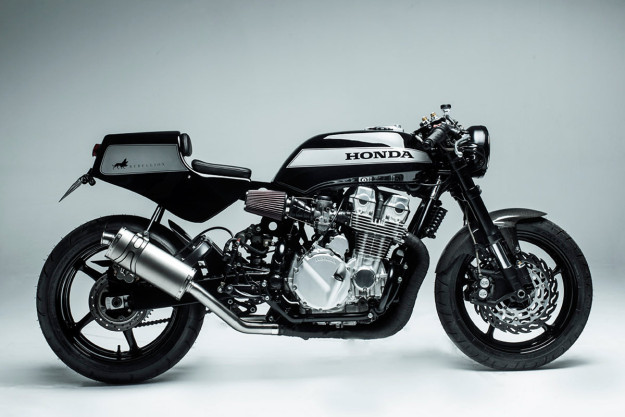
Has the term ‘café racer’ been abused beyond recognition? A growing number of experienced bike builders think so, including Madrid-based Rebellion Of The Machines.
“Rebellion is a reaction to the ‘new’ café racer scene,” says founder Adolfo Calles. “We’re fed up with the ‘artisan’ word being used to hide badly finished bikes—and absurd stuff like knobby tires on 130 horsepower machines. ”
“So this machine is a true performance bike. A real café racer must handle and brake better than the original and weigh less—and look like it’s doing 200 mph when standing still!”
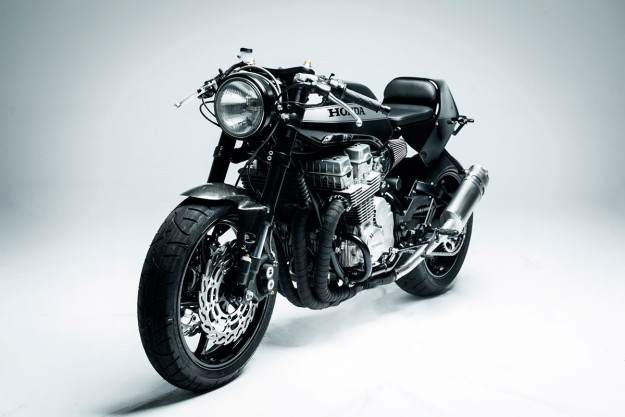
It’s fighting talk, but Rebellion has the experience to back it up. Adolfo owns Spain’s oldest custom shop, Bonneville Motorworks, and he works with two brothers at the top of the motorcycle game: Raúl and Jose Pérez, mechanical engineers who also contract to Bultaco and race motorcycles worldwide.
Rebellion’s mission is to build bikes where everything has been reworked, to improve aesthetics or performance—and preferably both. “We’re focused on quality,” says Adolfo, “and we offer the bikes fully homologated and with a lifetime warranty.”
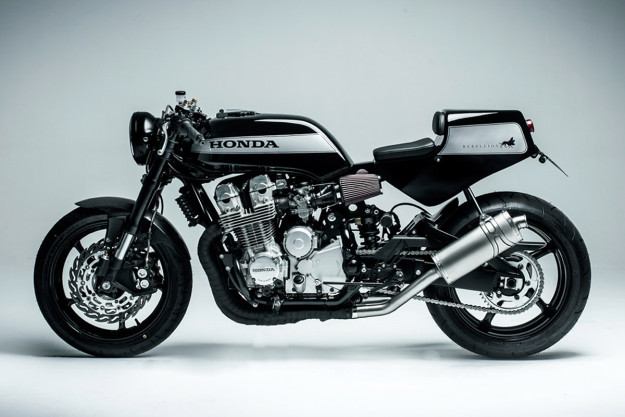
It’s a brave step, but Adolfo has confidence in his work and he’s been building for a long time. “We are that sure of our job. It sounds arrogant, but it’s not meant to be. We think that every builder should be proud of their handiwork.”
The Honda CB750 shown here is a 1994 model that has been owned since new by Rebellion’s client. Adolfo and the Pérez brothers were given carte blanche to do whatever they wanted, and their first decision was to fit the front end from a Yamaha R6—plus Brembo upgrades to the brake system.

The tank is a native Honda CB item, but a modified 1984-spec model. The tail unit is from a Yamaha TZ, sitting on a reworked subframe and hiding the battery and much of the electrics. Directly below is a Yamaha R6 swingarm; Rebellion modified the rear end to take a monoshock.
The geometry of the bike is stock, down to the last millimeter. “We are not better than 25 Japanese engineers at Honda working for a year,” Adolfo concedes.
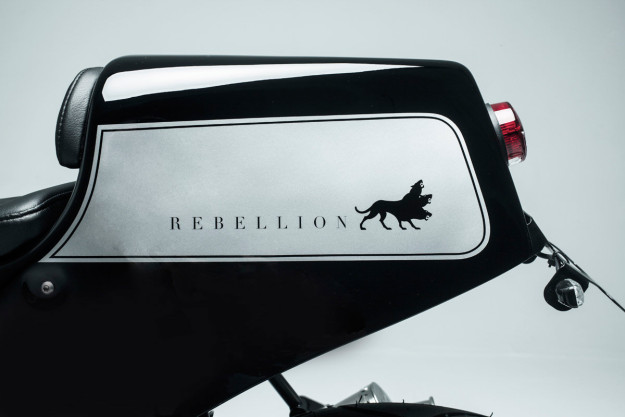
The CB750 had done just 50,000 kilometers, so the engine was in excellent condition. Still, Rebellion opened it up just to check, and changed the bearings, seals and gaskets. A new clutch was fitted too, just to be on the safe side.
The standard air filters were replaced with free-flowing pod filters. “The engine struggles with small filters—they do not work,” says Adolfo. “So we made an intake that feeds two carburetors from each filter.
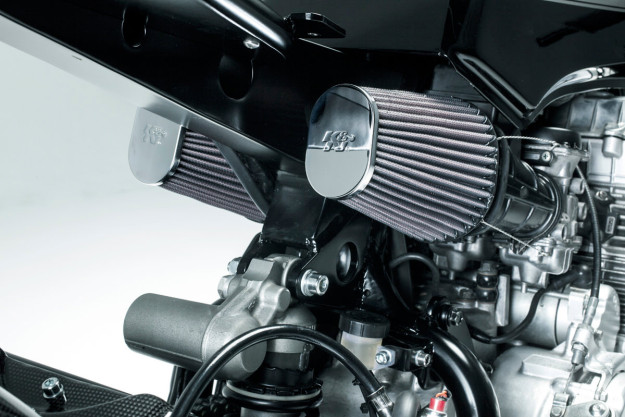
Other small parts have been carefully chosen, such as an LED taillight, a hidden Motogadget instrument, and road-legal titanium mufflers.
There are parts from the 1970s to the 21st century sprinkled throughout the build. “It’s a cocktail that we think blends harmoniously, but avoids solutions that everybody uses, like yellow headlights and so on…We want to make our bikes look ‘factory’ from not only the parts, but also the quality of the work.”

We’d say they’ve succeeded. Rebellion’s CB750 weighs just 198 kg with a full tank of gas, around 25 kilos lighter than stock. And we’re told that it “handles like a dream and brakes incredibly well.”
If you like Rebellion’s approach, you’ll be glad to know that another four Hondas are in the pipeline, with similar parts and bodywork but different detailing and paint. The cost is €15,000—about US$17,000—including the warranty.

At a time when many custom builds are costing well over $20,000 and focusing on the ‘show’ rather than the ‘go,’ that sounds like excellent value for money.
Rebellion Of The Machines website (coming soon) | Facebook page | Images by Luis De Las Alas